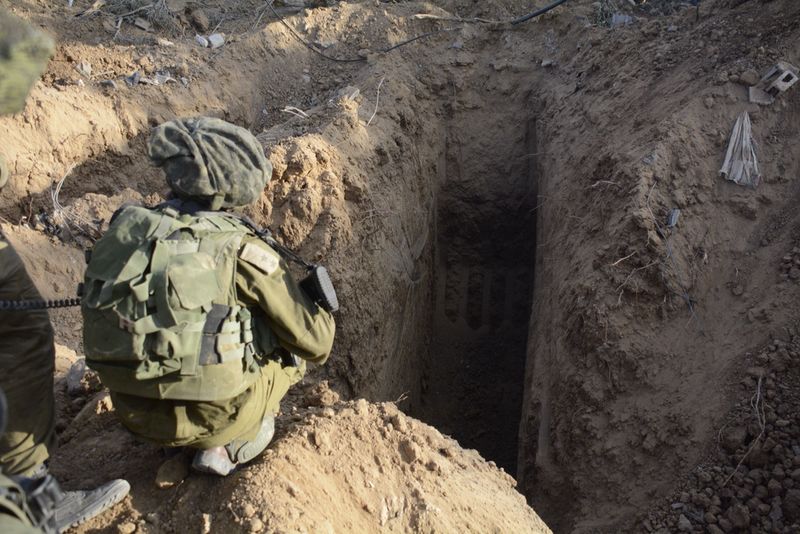Hamas, the Palestinian militant organization that governs the Gaza Strip, has been known for using underground tunnels, often called ‘terror tunnels.’ These underground passages have played a significant role in the ongoing Israeli-Palestinian conflict, serving both military and strategic purposes.
Origins and Purpose
Hamas began constructing tunnels in the early 2000s, primarily intending to bypass the Israeli and Egyptian blockades of the Gaza Strip. These tunnels were initially used for smuggling essential goods, including food, medicine, and construction materials, to help alleviate the humanitarian crisis in Gaza.
However, over time, Hamas expanded the use of these tunnels for military and strategic purposes, including smuggling weapons, ammunition, and combatants into Gaza. They became a vital component of Hamas’s asymmetric warfare strategy against Israel.

Credit: Israel Defense Forces from Israel, CC BY-SA 2.0, via Wikimedia Commons
Operational Capabilities
Hamas’ tunnel network is extensive and sophisticated. The organization has constructed various types of tunnels, including:
- Smuggling Tunnels: These tunnels transport goods and weapons into Gaza. They were crucial during the years of blockade.
- Combat Tunnels: Hamas has built underground tunnels that extend into Israeli territory. These tunnels are intended for launching surprise attacks on Israeli military and civilian targets.
- Defensive Tunnels: Some tunnels serve as shelters and command centers for Hamas fighters. They are equipped with communication systems, electricity, and medical facilities.
Hamas
Challenges and Dangers
The presence of Hamas tunnels poses several challenges and dangers:
- Security Concerns: The tunnels have been used for attacks on Israeli military outposts and communities near the Gaza border, endangering the lives of Israeli civilians.
- Escalation: Discoveries of these tunnels have led to military escalations, with Israel launching operations to destroy them.
- Humanitarian Implications: The use of tunnels for military purposes diverts resources away from addressing the humanitarian needs of the Gaza population.
Israeli Countermeasures
Israel has implemented a range of countermeasures to detect and destroy these tunnels, including advanced technology, intelligence operations, and military strikes. The destruction of these tunnels has been a critical objective in several Israeli military operations, such as Operation Protective Edge in 2014.
Ongoing Tensions
Lastly, Hamas ‘terror tunnels’ remain a source of tension and conflict in the region. It is a complex issue encompassing security concerns, humanitarian challenges, and political dynamics within the Israeli-Palestinian conflict. So the tunnels’ impact on the civilian population in Gaza and the security of Israeli communities near the border underscores the need for a comprehensive and peaceful resolution to the ongoing conflict.







